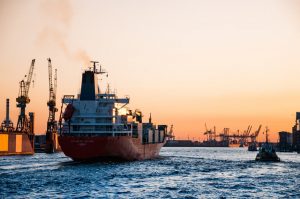
Over the span of 10 years, the ocean freight transportation industry has been challenged by global supply and demand disparity throughout the market, affecting both carriers and shippers. On occasion, there is overcapacity in the market, causing a major decline in the rates. There are also occurrences in which demand quickly increases, causing the rates to spike. Ocean carriers have benefited from these periods of increased demand, triggering rates to shoot up and become more unstable and challenging for shippers to allocate and purchase space.
One of the driving variables of this global supply and demand imbalance was Maersk’s fleet venture initiative: Maersk sought to control the worldwide container market and drive existing industry rates. They started building more vessels to achieve this goal. However, this plan was interrupted by the Great Recession of 2007-2009, when supply decreased rapidly for container shipping.
The recession instigated a chain reaction for ocean carriers, making it vital to ensure that freight rates didn’t tumble too far. In response, ocean carriers began forming new alliances and incorporating the following strategies:
- Slow steaming: conserve fuel and increase transit times
- Vessel idling: remove vessels from the rotation during slow periods
- Organizational cost-cutting: layoffs within the company
- IT modernization: large investments into technology and creating a more automated system
The Main Three
What used to be four main alliances has recently changed into three larger unions. The current state of the three-carrier alliance takes into account almost 80% of the container trade in the world and nearly 90% of container volume on primary trade lanes.
- 2M Alliance (MSC, Maersk, Hamburg Sud, Hyundai)
- Ocean Alliance (CMA CGM, APL, COSCO, China Shipping, OOCL, Evergreen)
- The Alliance (NYK Group, “K” Line, MOL, Yang Ming, Hapag-Lloyd, UASC)
The absence of competition that has been created due to these major unions has permitted carriers to recapture productivity, control rate changes, and space accessibility. As a shipper looking for other possibilities, it can be troubling that five or six worldwide carriers control all major international trade routes.
New Carrier Alliance
Three Japan-based container shipping carriers are paring up to create a new joint venture, entitled Ocean Network Express (ONE). These carriers are comprised of Kawasaki Kisen Kaisha, Ltd. (K-Line), Mitsui O.S.K. Lines, Ltd. (MOL), and Nippon Yusen Kabushiki Kaisha (NYK). The development of the joint venture is said to merge the companies’ container shipping business, including global terminal operation business. By offering high-quality, competitive services through the enhancement and alliance of the three companies’ global network and service structures, Ocean Network Express will be capable of better meeting customers’ needs. The company has also been working towards its goal of launching the new JV. Once all anti-trust reviews are finalized, the establishment of the new JV will officially be publicized. The start date for Ocean Network Express is set for April 1, 2018.
Benefits:
- Provide service across 90 countries
- Fleet size of 1.4 million TEU (Twenty-Foot Equivalent Units)
- Represents around 7% of the global share
The Power of Carrier Alliances
Advantages of the carrier alliances include:
- Less competition, while at the same time greater control of vessels
- Better management of ship capacity
- More effective coordination of future ship orders with forecasted demand
- A lowering in operating costs by more effective collaboration with service providers, such as ports, terminal operators, stevedores, tugboat providers, and container lessors
- Enhanced reach, that will allow alliance partners to service new ports and maximize the potential of new routes
Concerns due to the alliances include:
- Terminal congestion
- Chassis dislocations: raises concerns that the shipper or importer may be bearing the brunt of that impact and paying any associated dislocation fees.
- Delays in spotting and releasing intermodal trains: intermodal trains have been delayed or had other challenges due to increased congestion and ship bunching
The history of the maritime industry has traditionally been one of feast or famine. Large swings in vessel capacity and shipper demand have made for a turbulent environment in terms of financing and planning for the future. The formation of shipping alliances has helped to mitigate these issues and serve as a strong incentive to continue and strengthen them.
Logistics Plus can be your trusted partner in navigating the challenges of dealing with and arranging your logistical needs with these large organizations.

